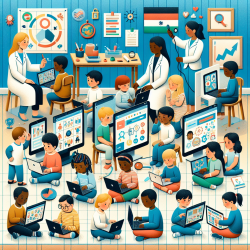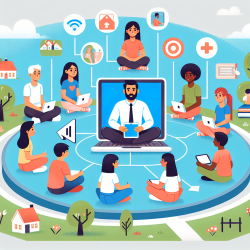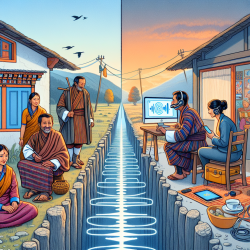The recent research article titled "Evidence and gap map of studies assessing the effectiveness of interventions for people with disabilities in low-and middle-income countries" provides valuable insights that can help practitioners in online therapy services improve their skills and outcomes. This blog post will explore key findings from the research and suggest practical ways to implement these insights in online therapy, particularly for children.
Understanding the Evidence and Gap Map (EGM)
The EGM included 166 studies, with 59 systematic reviews and 107 impact evaluations. These studies assessed the effectiveness of interventions across five components: health, education, livelihood, social, and empowerment. The most heavily populated area was health, with 118 studies, followed by education with 40 studies. However, there were significant gaps in the areas of livelihoods, social, and empowerment.
Key Findings and Their Implications
The research highlighted several critical findings:
- Health interventions, particularly those related to mental health and cognitive development, were the most studied and showed significant positive outcomes.
- Education interventions were the next most heavily populated area, focusing on early childhood development and inclusive education.
- There were notable gaps in studies related to empowerment and social inclusion, which are crucial for holistic development.
- Geographic disparities existed, with most studies conducted in upper-middle-income countries and very few in low-income countries.
- Quality of studies varied, with many impact evaluations showing methodological limitations.
Practical Applications for Online Therapy Practitioners
Based on these findings, online therapy practitioners can take several steps to improve outcomes for children:
1. Focus on Mental Health and Cognitive Development
Given the strong evidence supporting health interventions, particularly in mental health and cognitive development, practitioners should integrate these elements into their therapy sessions. Techniques such as cognitive-behavioral therapy (CBT) and other evidence-based practices can be adapted for online formats to support children's mental health.
2. Emphasize Early Childhood Development
Early childhood is a critical period for development. Practitioners should prioritize early intervention programs that promote cognitive and social skills. Using interactive and engaging online tools can help keep young children motivated and involved in their therapy.
3. Address Gaps in Social and Empowerment Interventions
To create a more holistic approach, practitioners should incorporate social skills training and empowerment activities into their sessions. This can include group therapy sessions that promote social interaction or activities that build self-esteem and independence.
4. Adapt Interventions to Local Contexts
Practitioners working with children from diverse backgrounds should consider the geographic and cultural context of their clients. Customizing interventions to be culturally sensitive and relevant can enhance their effectiveness.
5. Advocate for High-Quality Research
Practitioners should advocate for and participate in high-quality research to fill the existing gaps, particularly in low-income countries. Collaborating with researchers can help generate robust evidence that informs best practices.
Encouraging Further Research
While the EGM provides a comprehensive overview, it also highlights the need for more high-quality studies, especially in under-researched areas. Practitioners should stay informed about ongoing research and consider contributing to studies that address these gaps.To read the original research paper, please follow this link:
Evidence and gap map of studies assessing the effectiveness of interventions for people with disabilities in low-and middle-income countries.










